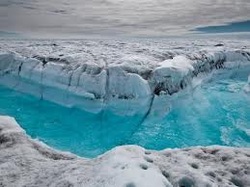 Modern regional atmospheric models and satellite observations have independently affirmed that the Greenland ice sheet is experiencing mass loss at a faster rate, according to a new study.
The mass loss is evenly spread out between increased production of iceberg, driven by the acceleration of fast-flowing outlet glaciers in Greenland, and increased production of meltwater at the surface of the ice sheet. Mass loss is further accelerated by warm summers to 273 Gt a year in 2006–2008, representing 0.75mm of global sea level rise every year.
”It is clear from these results that mass loss from Greenland has been accelerating since the late 1990s and the underlying causes suggest this trend is likely to continue in the near future. We have produced agreement between two totally independent estimates, giving us a lot of confidence in the numbers and our inferences about the processes,” said Jonathan Bamber, a professor at the University of Bristol, and author of the paper.
The Greenland ice sheet has sufficient amounts of water to produce a seven metre global sea level rise. Since 2000, it has lost a total of approximately 1500 Gt, indicating a global sea level rise of approximately half a millimetre every year on average.
While the surface melting rate increased around 1996, snowfall on the Greenland ice sheet also increased at about the same speed, covering surface mass losses for almost a decade.
 Mumbai – India’s minister for renewable energy said they will be launching an ambitious plan to improve the country’s generation of solar power from only 3 MW to an astounding 20,000 MW in 2022.
"The amount which we are going to talk about is huge. I can only say that much," said Farooq Abdullah to reporters. He also added Prime Minister Manmohan Singh will be announcing the new policy by next week.
Known as "the National Solar Mission" in official circles, this policy framework will highlight the high manufacturing cost of solar panels and high cost of solar power.
One rough rule is that a coal-based power plant with a capacity of one megawatt could cost about $1 million in construction, while the cost is double for solar capacity.
“Our job is to bring the costs down. Whether we are going to give concession on import duties, whether we are going to give a sizeable subsidy to purchase solar power, all will be outlined in the mission”, Abdullah said.
There is a critical shortage in electricity in India, with its peak power at 12 percent below the actual demand. Blackouts are very common and many businesses rely on generators.
India has planned to create 78,700 megawatts in power capacity within five years until 2012; however, top officials have calculated the target will not be reached.
 Google had distributed a new cellular phone that operates its Android software to several employees, raising another wave of rumours that the alleged Google mobile phone is authentic.
In a blog post published on Saturday, Google claimed the mobile units are being handed out so that their employees can test their new features. However, it did not state that the unit will be a Google-trademarked phone.
New speculations arose when a Google employee stated in her Twitter posting earlier, that she has the cell phone unit called the ‘Google phone’.
Even before the company revealed Android, spectators wondered if Google would create its own mobile brand. Rather, the search engine giant released an operating system, which other hardware marketers can use for their phones.
Mario Queiroz, Google’s vice president in product management, stated in a blog post that the company distributed the mobile units to employees in order to test their new technology.
“We recently came up with the concept of a mobile lab, which is a device that combines innovative hardware from a partner with software that runs on Android to experiment with new mobile features and capabilities, and we shared this device with Google employees across the globe,” he accounted. “This means they get to test out a new technology and help improve it”.
While the label ‘Google phone’ has been mentioned to refer to a device created and branded by the company, some as well use the term to describe other phones operating on Android.
 According to the Interior Department, a team of American scientists in the Gulf of Mexico netted a 5.9-metre giant squid off Louisiana’s coast.
The 46.7-kilogram giant squid was caught in a trawl net from a research vessel on 30 July.
The giant squid did not survive when brought to the surface due to the rapid change in water depth. The squid was preserved and its remains were sent to the Smithsonian Institution's National Museum of Natural History for further analysis.
The team aboard the research vessel included scientists from the National Oceanic and Atmospheric Administration (NOAA) and the Interior Department's Minerals Management Service.
"As the trawl net rose out of the water, I could see that we had something big in there...really big," said Anthony Martinez, the chief scientist on the research vessel and NOAA’s marine mammal scientist.
The research team was aware of the presence of the giant squid because its remnants had been found in its predators’ stomachs in the waters of the Caribbean, Florida Keys and Gulf of Mexico.
Since the species is difficulty to catch, the researchers’ discovery opens the opportunity to learn more about them.
According to Director Michael Vecchione of NOAA's Fisheries Service's National Systematics Laboratory, the giant squid’s discovery was an important addition to the global study of squids.
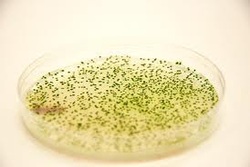 Scientists at the UCLA Henry Samueli School of Engineering and Applied Science genetically altered a cyanobacterium to utilise carbon dioxide and generate isobutanol, a liquid fuel that may potentially be an alternative for gasoline. The reaction is directly powered by sunlight, by means of photosynthesis.
According to the researchers, this new technique holds two advantages for the achievement of a greener and cleaner energy economy. First, it makes use of carbon dioxide, thus reducing emissions of greenhouse gases caused by fossil fuel burning. Second, it utilises solar energy to change carbon dioxide into isobutanol that may be used in automobiles.
As other gasoline alternatives consist of developing biofuels from algae or plants, these processes need a number of intermediate measures before its refinement into efficient fuels.
“This new approach avoids the need for biomass deconstruction, either in the case of cellulosic biomass or algal biomass, which is a major economic barrier for biofuel production”, stated study head James C. Liao, the associate director of the UCLA-Department of Energy Institute for Genomics and Proteomics. “Therefore, this is potentially much more efficient and less expensive than the current approach”.
With the use of the cyanobacterium Synechoccus elongatus, scientists first genetically raised the amount of RuBisCO, a carbon dioxide-fixing enzyme. To create a strain that utilises sunlight and carbon dioxide for the production of isobutyraldehyde gas, they then spliced genes generated from other bacteria. The high vapour pressure and low boiling point of the gas allows it to be stripped easily from the system.
 Research studies at the Wake Forest University School of Medicine have revealed that stopping the NMDA receptor of young rats causes great damage to the brain and disrupts the hearing function as the rats mature.
The NMDA (N-methyl-D-aspartate) receptor is triggered when brain cells release a chemical called glutamate. This leads to the entry of calcium into the brain, which can later have a great effect on its important functions. As the receptor is blocked, the entry of calcium is then prevented, leading to the deterioration of certain brain functions.
In medicine, some anaesthetics used for medical procedures in humans work by blocking the NMDA receptor; thus, raising speculations as to the side effects of these drugs when induced in children.
"While research in animals does not always apply to humans, our work with rats supports clinical studies by other groups that suggest learning deficits may occur in young children who have been exposed to general anaesthesia”, stated Christopher P. Turner, Ph.D., an Anatomy and Neurobiology assistant professor.
"Over the past decade, we've identified and defined the injuries taking place in young rodent brains, understood the molecular changes that are occurring because of those injuries, and now we understand how those injuries may influence the behaviour of laboratory animals that have been exposed to drugs that block the NMDA receptor”, he added.
They have considered the possible effects of anaesthetics in children after observing that MK801, which functions the same way as anaesthetics, can cause rapid brain injury on immature rodents.
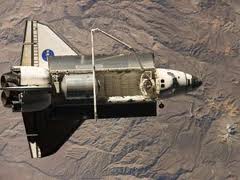 Because of the bad weather condition, NASA postponed its plan of landing the shuttle Discovery until Friday at the landing site in Florida, officials said last Thursday.
NASA commentator, Rob Navias said, “Mother Nature had the upper hand today.”
The Discovery’s flight directors attempted twice to bring the shuttle back home from the 13-day mission of re-supplying the International Space Station, but they were deterred by brisk winds and rain showers at the Kennedy Space Center.
As a result, NASA rescheduled the shuttle’s landing to Friday at 2148 GMT (5:48 P.M. EDT), and with plans of back-up landing at 2323 GMT (7:23 P.M.). In addition, NASA will open its back-up landing area located at California’s Edwards Air Force Base.
In the meantime, the shuttle’s crew had to change the Discovery’s orbit earlier on Thursday to steer away from orbital space debris.
It is still unknown to NASA what the space fragments were, but they claimed that it likely came from the space station or the shuttle itself on Saturday when the Discovery’s crew made their last three spacewalks.
Pat Ryan, NASA’s spokesman, said, “Exactly what (the debris) is not known, but it's been moving toward the orbiter so it is a concern.”
In addition, during the nine-day stay of the Discovery at the space station, two other orbital space debris were discovered that made engineers scramble to prepare for avoidance manoeuvres, but such actions were later determined to be unnecessary.
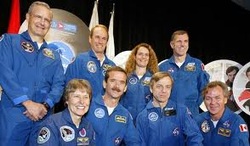 After successfully landing at the Edwards Air Force Base in California, the crew of the space shuttle Discovery prepared to return to Texas to meet with the NASA managers and their families.
Due to bad weather conditions in Florida, the space shuttle took a cross-country detour to California’s Mojave Desert.
The crew is expected to attend a welcome ceremony at the Ellington Field in Houston, Texas.
The space shuttle streaked through the Mojave Desert sky, gliding smoothly then halting successfully at the Edwards Air Force Base’s paved runway.
The Discovery returned from a 5.7 million-mile, 14-day mission to the International Space Station.
Upon landing, six of the crew members emerged from the shuttle to inspect the Discovery’s underside, which is customary.
Rick Sturckow, the flight commander, said that Discovery performed well in the mission.
“We're very happy to be back on land here in California. We wished we could have gone to Florida today ... but it just didn't work out with the weather”, Sturckow said.
One of the seven astronauts, Timothy Kopra, did not face the media after the landing because he was undergoing a series of tests, Sturckow added.
During the mission, the crew performed three space walks. They also resupplied the International Space Station with 18,000 pounds of equipment, including the $5 million treadmill named after Comedy Central’s Stephen Colbert.
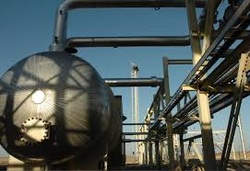 A budget of $778.8 million has been allocated for a second project to capture the carbon emissions in the western regions of Canada – the area where its oil sands are found. This was announced Wednesday by the Canadian government as well as by the government of Alberta province.
According to officials, the money, which is derived from the stimulus package of the country, will be used to upgrade the coal-fired Keephills 3 power plant of TransAlta, located near Edmonton, Alberta, and likewise, lessen its carbon emissions.
They say that they will capture an approximate one million tonnes of carbon emissions, which are to be kept in 2.8-kilometre-deep wells beneath the surface, close to the plant.
Last week Canada declared its intent to allocate 821 million US dollars in order to capture the carbon emissions of its immense oil sands – which environmentalists have denounced as extremely polluting.
The money is to be spent over a span of 15 years on the Shell Quest project – a joint venture by Marathon Oil Sands, Chevron Canada Limited, and Shell Canada – which aims to integrate the technology of carbon capture at an upgrader close to Edmonton.
Officials said that they expect the application to capture greenhouse gas emissions that will reach about 1.1 mega tonnes annually – a reduction of approximately 40 per cent.
Alberta’s oil lands rank second among the world’s largest oil reserves, next to Saudi Arabia. Except for local oil companies, the oil reserves have been neglected for years due to expensive extraction costs.
 Southern California’s kelp forests are considered one of the most productive and diverse ecosystems in the world. However, a new study shows that current kelp beds have extensively lessened compared over the years.
A research conducted by Rick Grosberg, a professor at the Center for Population and Biology and the Department of Evolution and Ecology in UC Davis, with Brian Kinlan, from UC Santa Barbara, and Michael Graham, from the Moss Landing Marine Laboratory, found that kelp forests flourished since the glaciation era from 20,000 to 7,500 years ago, then declined by about 70%.
Kelp forests surrounding offshore islands increased 13,500 years ago as the rise of sea levels shaped new habitats for their growth. However, these forests showed rapid decline over the previous years.
This shift, from an island-based system to a mainland-dominated one, coincided with some events accounted in archaeological records, implying that climate-triggered shifts of kelp ecosystems affected human populations that were dependent on these sources.
“Kelp is interesting because it disperses only over short distances”, Grosberg said. “Populations can become genetically isolated from one another even if they are quite close together”.
“We wanted to know how connected the coastal kelp populations were since the last glacial maximum”, he explained.
Scientists utilised depth charts of southern California’s shoreline and some sediment core information on previous nutrient availability to reconstruct possible kelp habitats as sea levels altered over the last 20,000 years.
|










 RSS Feed
RSS Feed